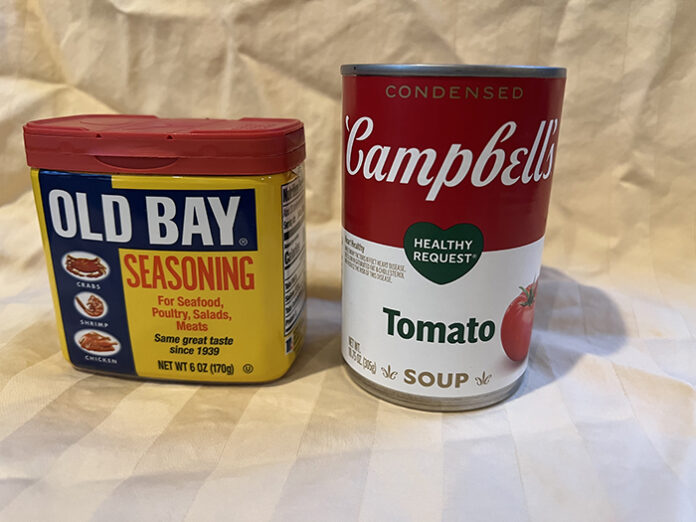Out to summer dinner in Healdsburg the other night, a few of us sat around a table set on a driveway. Yeah, it’s an H’burg thing in the pandemic. Passersby walking dogs chatted, bicyclists waved. Oh my goodness, the fresh Moroccan fare from start to finish was spectacular.
Petting the dog, I noticed her collar repped Old Bay. Folks from Maryland are proud of their state, dogs too. Chesapeake Bay, soft shell crabs, Old Bay Seasoning, apparently the logo appears on T-shirts, dog collars, even bathing suits.
Out to another dinner, tablemates were sharing personal stories and someone mentioned their family association with Campbell Soup. An interesting part of the story was late in the 1800s an immigrant family couldn’t afford to raise all their children. Two brothers were sent to an orphanage.
After graduation, the brothers went separate ways. One owned an industrial chain company, while the other brother, named Campbell, associated with Campbell Soup in its horse-drawn carriage days—each becoming a success.
Some facts: Old Bay Seasoning was started by a Jewish spice merchant from Wertheim, Germany. In 1938, after Kristallnacht, Gustav Brunn was sent to Buchenwald. Brunn was released through a monetary arrangement, coming to the U.S. with a spice grinder.
In the U.S., Brunn worked for McCormick Spice, but left to start his own brand. Calling it the “Baltimore Spice Company,” he sold “Delicious Brand Shrimp and Crab Seasoning.” As popularity grew, he renamed it “Old Bay” and sold it in a yellow and blue box.
In 1990, McCormick, Brunn’s original employer, bought Old Bay for an estimated $12 million. The recipe for Old Bay has never been published.
Joseph Campbell, a fruit merchant, joined with partners in 1869 to found what would become Campbell Soup. The company’s competitive advantage was condensing soup.
The first red and white can appeared in 1898, inspired by the Cornell football team’s new uniforms. Andy Warhol made the soup can paintings in 1961 and 1962, showing 32 flavors on 32 canvases, and helping solidify an iconic brand identity.








